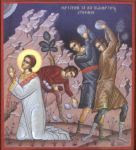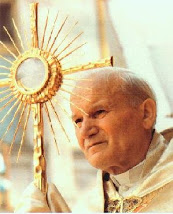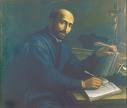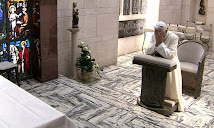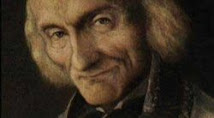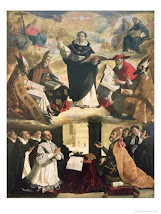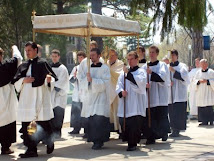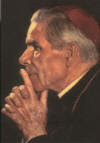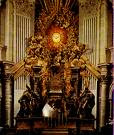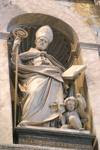
The French edition of the Catechism of the Catholic Church was presented to the public in Paris Nov. 16, and on Dec. 7th the Holy Father formally presented it to the Christian world. In the interim the Italian and Spanish editions have been made available; other translations will follow shortly. The official Latin text will appear later, thus it will also be able to take into consideration what the experience of translating it has brought out or could still suggest. For some time now this book has been the topic of public debate since several drafts were wholly or partially made known.
What has been written so far about the catechism was for the most part rather onesided. Thus it could seem that it was really a list of sins and that the church wanted most of all to tell people what they could not do. Nevertheless, the curiosity, even the passion, with which this book became the subject of debate long before its publication, even outside Catholic Christian circles, is an extremely important phenomenon. In fact, even where the comments were less positive, one felt that people were in some way affected by this book, by its questions and answers. It clearly showed that the problem of what we must do as human beings, of how we should live our lives so that we and the world may become just, is the essential problem of our day, and basically of all ages.
After the fall of ideologies, the problem of man--the moral problem--is presented to today's context in a totally new way: What should we do? How does life become just? What can give us and the whole world a future which is worth living? Since the catechism treats these questions, it is a book which interests many people, far beyond purely theological or ecclesial circles. It can especially arouse interest because it does not merely present some private opinion invented by somebody or other, but formulates the response that comes from the great communal experience of the church of all ages. This experience, however, is due in turn to a cognitive event which has its roots beyond what is merely human and hands on a divine revelation, what people who were in contact with God himself could see and hear.
Christian Morality Based on Doctrine of Creation
What I have said up to this point could give rise to the question: Is the catechism really a book of morals? The answer is: Yes it is, but it is something more. It deals with the human person, but in the conviction that the human question cannot be separated from the God question. One does not really speak rightly of man without speaking of God as well. However, we cannot really speak correctly about God if he himself does not tell us who he is. Therefore the moral directives offered by the catechism cannot be separated from what it says about God and the history of God with us.
The catechism must be read as a whole. It would be an erroneous reading of the pages on morality if they were to be separated from their context, namely, from the profession of faith and the teaching on the sacraments and prayer. In fact, the catechism's basic assertion about human nature is as follows: Man is created in the image and likeness of God. Everything that is said about proper human conduct is based on this central perspective. It is the basis of human rights, which belong to the human person from conception to the last instant of life. No one can grant them to him, just as no one can deprive him of them; they are inherent in his nature. This is also the basis of human dignity, which is intangible in every person precisely because he is a person. Last, included in it we also find the unity and equality of human beings: All human beings are creatures of the one God, and therefore all have equal dignity, all are united to one another by a fraternal bond, and all are responsible for one another and called to love their neighbors, whoever they may be.
In the catechism the question about man and the God question are inseparably interwoven; everything that is said about our moral conduct can therefore be said only from God's viewpoint from the viewpoint of that God revealed in Jesus Christ. Thus it also becomes evident that in this conception of morality we do not have just a collection of prohibitions, a list of sins. It always involves the question of how can I make my human existence upright? How can I succeed in life? On this the catechism speaks quite clearly through St. Augustine's conception of morality, which is very simple in its basic formulation. During the troubled course of his life he was always faced with the same question: What will make me happy? Everyone asks this question; the need for happiness is part of our nature.
With the faith of the church as its point of departure, the catechism tells us that happiness can be had only with others, in responsibility for the whole of humanity. However, the communion of human beings with one another and responsibility toward others can in turn ultimately be had only in communion with God and in responsibility before God. In this sense morality is a teaching about what happiness is and how it can be found —obviously, however, we are talking about true happiness, not a selfish happiness, which is only a semblance of happiness.
Hence the essential response which the catechism in turn gives, based on the Bible, based on the church's faith, is a very simple one: For the human person happiness is love. In this sense the catechism's morality is an instruction on what love is. In this regard it tells us that the essence of true love became visible in the person of Jesus Christ, in his words as well as in his life and death. It also tells us that the Ten Commandments are only an explanation of love's ways; that we read them correctly only if we read them in Jesus Christ. In this sense all the essential contents of the profession of faith are found in the moral part, and there they become praxis.
In fact, the catechism's morality has its starting point in what the Creator has placed in the heart of every person: the need for happiness and love. Here we also clearly see what is meant by God's likeness: Human beings are like God because they can love and are capable of truth. Moral behavior is therefore in the deepest sense of the word a behavior with creation as the standard. If Catholic moral tradition and--in line with it--the catechism too speak of the nature of the human being, the natural law and behavior according to nature, it does not mean a supposed biologism but behavior that begins from what the Creator has placed in our being. As a consequence the heart of all morality is love, and by always following this direction we inevitably find ourselves encountering Christ, the love of God made man.
Catechism Structured According to Apostles' Creed
I have dwelt a long time on how the moral question is presented in the catechism, not to isolate morality again but rather, on the contrary, to arouse your interest in the catechism as a whole, even though that may not be your immediate interest. Please allow me to add a few brief ideas about the remaining parts and some details of the catechism's structure. As baptismal catechesis has done since the remotest times, the first part follows the profession of faith, the so- called Apostles Creed. During the first centuries this was the baptismal confession of the church in Rome, and from Rome it became the norm for all of Western Christianity.
However, in its essential structure and its statements it corresponds perfectly with the Eastern baptismal confessions; the fact that we chose it as the leit motif for the catechism should not, however, be seen as a unilateral preference for Western tradition.
A tradition dating back to the fourth century divides the creed into 12 articles in honor of the 12 apostles. This subdivision certainly has a valid sense, but the original structure is simpler: As a baptismal confession, the apostolic Symbolum, like the baptismal formula, is also quite simply a profession of faith in the Triune God, Father, Son and Holy Spirit. We retained this triple structure, which is common to all baptismal professions. Thus we see quite well the hierarchy of truths: At base the Christian faith is simply faith in God; all the rest is development. Our faith is not a theory but an event, an encounter with the living God, who is our Father, who welcomed human nature in his Son Jesus Christ and who unites us in the Holy Spirit, and in all this remains the one and only God. Through the link between the teaching of the faith and the baptismal profession it also becomes very clear that catechesis is not merely a communication of religious theory but is meant to begin a vital process: entrance into communion with God through baptism.
Thus we quite naturally move to the second part in which the seven sacraments are presented. The sacraments are the church in her realization. The history of all religions recognizes sacred signs. The human being can enter into contact with the eternal only by means of the tangible, but the things of this world also have a certain internal predisposition to mediate contact with God. In this way the signs of creation and the symbolic world prepared by various religions could be taken up by the faith and, following Christ's mandate, become signs of redemption.
For this very reason we have always sought to present the sacraments beginning from their liturgical form. Therefore this second part is also an introduction to the church's liturgy. Our difficulty was that in a book meant for the whole church we could not begin with a single rite, for example the Latin one, as a starting point. Concrete explanations of individual rites must at times be made in catechesis. We were concerned to emphasize the common fundamental structure of the various rites. That was not always easy to do, but it became a fascinating task: Now it can be seen how in the great diversity of liturgical forms there are still important common symbols, and thus they clearly show the will of Christ himself.
Commentary on Our Father
The fourth part, which deals with prayer, in some way summarizes the parts that preceded it: Prayer is applied faith. It is inseparably united with the sacramental world. Sacraments predispose one to personal prayer, and in turn they alone give personal prayer a solid orientation in that they insert it into the church's common prayer and, therefore, into Christ's dialogue with the Father. However, prayer and morality are also inseparable: It is only through conversion to God that the ways of true human fulfillment are opened. It is from prayer that we continually receive the necessary correction; through reconciliation with God it becomes possible to be reconciled with each other.
Along the lines of the great catechetical traditions, the catechism gives in the section on prayer, which in substance is a commentary on the Our Father, a further meaning: Prayer is an expression of our hope. The fact that we pray, that we have to ask, shows that our life and the world are imperfect; they are in need of help from on high. The fact that we are allowed to pray and that we are able to pray shows that we have been given the gift of a hope which is summarized in the invocation: "Thy kingdom come."
When we say these words we pray for the present world, but at the same time we are praying for eternal life, for the new world. Thus in the four parts of the catechism we see the mutual integration of faith, hope and charity. From the very moment we believe, we are allowed to hope. Because we believe and hope, we are capable of loving.
Conclusion
In conclusion, please let me give a few practical guidelines for reading the book. Historical notes and complementary doctrinal expositions are printed in small type and can even be omitted by readers who are less interested in a specialized viewpoint. However, we also printed in small type a rather large number of brief, poignant texts taken from the fathers, the liturgy, the magisterium and church history, which should help the reader understand something of the richness of the faith and its beauty. In this regard we took pains to present a balanced witness from the East and the West in order to illustrate the truly Catholic nature of the catechism; we also sought to include the words of holy women. The catechetical nature of the book is clearly seen in the so-called "en bref' that are found at the end of every thematic section. The catechism itself explains that their purpose is to offer suggestions for local catechesis in drafting summary statements that can be memorized (No. 22).
Naturally, we could say much more, for example, on the ecumenical nature of the book, on its relation to local catechisms, on concrete catechetical work and much more. However, all this must be left to further reflection on the catechism; besides, much by way of explanation in this regard has already been said. My explanation was meant to be merely an invitation to read it and offer some help in beginning this reading. In conclusion I would like to read the words with which the preface to the catechism ends, which in turn are from the preface to the Catechism of Trent:
"All the substance of doctrine and teaching must be oriented toward charity, which will never pass away. In fact, whether one is explaining the truths of faith, or the reasons for hope, or the duties of moral conduct, always and in everything emphasis should be given to the love of our Lord so as to help people understand that every exercise of perfect Christian virtue can flow from nothing other than love, just as in love it also has its ultimate goal" (No. 25 of the Roman Catechism, Preface 10).








